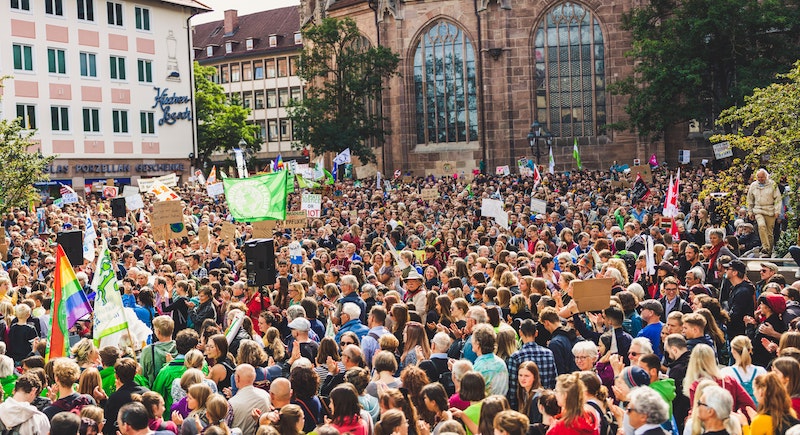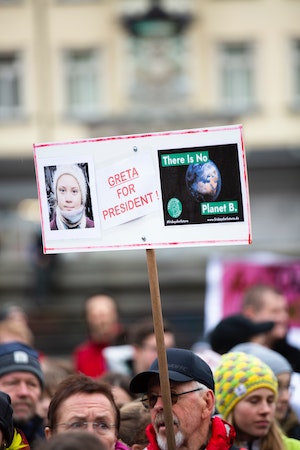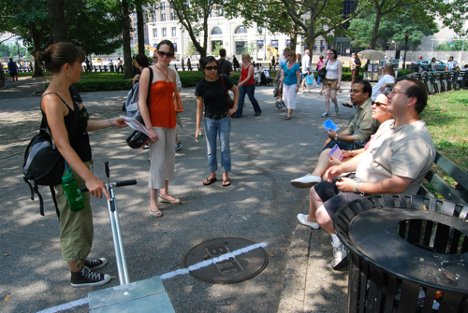By Anushree Biradar, Aimun Khan, Lucy Li, and Annanya Chaturvedi
One of the defining features of the 21st century is our ever-growing reliance on technology. There were 4.39 billion Internet users in 2019, and that number is growing exponentially. As the Internet grows, so does its growing impact on our planet. For some, computation acts as a gateway to worlds that were not previously accessible. For others, it represents a rising fear of globalization and automation displacing their ability to work and earn a living.
The advancements in technology we have seen in the past century have enabled humans to live in ways that previously seemed impossible. Travel and communication have become much faster, and the rise of personal computers has given people the ability to access knowledge from anywhere in the world.

At the same time, tech companies have taken advantage of this new global space to create increasingly positive images of themselves by heralding themselves as advocates of green and sustainable devices while shutting out smaller businesses from being able to have a part in this space. While these advances in tech have allowed us to pursue renewable energy resources and discover ways we can reduce the usage of fossil fuels, energy consumption through the use of personal computers has simultaneously shot up. This isn’t going to go away anytime soon either—as individuals and companies rely more and more on technology for computing power and storage, our dependence on devices will only grow.
However, this isn’t to say that technology is all good or all bad. To be sure, techno-optimism to an extent can cause us to shift the burden of responsibility to technologies rather than our own everyday choices. Yet it also has the potential to promote hope and activism from a technological standpoint.
The invention of green technologies and advances towards sustainable computing, manufacturing, industry, etc. have the possibility of reorienting how we view ourselves in relation to technology and the wider environment around. Importantly, it can help us be conscious of our daily choices and how they contribute to environmental degradation. In the past, technological advancements have helped society but hurt the environment. Arguably, if we can properly harness technology and innovate smartly, it can help steer us towards a more sustainable future rather than the path we’re currently on.
Because of these complexities, rather than framing technology as inherently good or bad, it is more useful to approach the subject from the lens of how different technologies have shaped our worldview and how our orientation towards technology has changed over time.
Analyzing our relationship to technology can also help give us insight into how our relationship to the environment has also changed over time. Historically, technology has been used as a force to further globalized capitalism’s expansion without regard for the environment. However, movements away from pure techno-optimism show that technology’s disruptive ability to challenge status quo ways of life can be repurposed towards more sustainable alternatives to hyper-consumerism.
Our definition of radical hope:
Radical hope is the ability to imagine alternative futures that are dramatically different from the present. Hope is radical in that it uses the past and present to create potential for alternative paths that may not initially seem like options. Those options exist, we just have to look closer. From this point of view, technological progress is a tool used to bring imagined futures to life. The question then becomes: what futures do we want to imagine and progress towards?
Readings:
Constructing a Sustainable Society:
Dargis, Manohla. “‘Who Killed the Electric Car?’: Some Big Reasons the Electric Car Can’t Cross the Road.” The New York Times, June 28, 2006.
Scofield, Jerri-Lynn. “Waste Not, Want Not: Right to Repair Laws on Agenda in Some States.” Naked Capitalism, January 29, 2017.
Stoekl, Allan. Bataille’s Peak: Energy, Religion, and Postsustainability. Univ Of Minnesota Press, 2007. [If this is too long, the last two subsections are the most critical.]
Techno-optimism and Greenwashing:
O’Mara, Margaret. “The Church of Techno-Optimism.” The New York Times, September 28, 2019.
Schwab, Katharine. “Apple, Amazon, and the Rest of Big Tech All Have a Lot to Learn from the Green New Deal.” Fast Company, June 27, 2019.
Cawley, Conor. “Big Tech and Climate Action – Real Change or Greenwashing?,” Tech.co, February 18, 2020.
Room for Hope through Technology:
“Green Computing: What Technology Services is Doing to Go Green.” University of Puget Sound. Accessed July 23, 2020.
Visser, Nick. “10 Green Technologies That Could Help Revolutionize Our Changing Planet.” HuffPost, May 7, 2015.












